Cardsharping with steganography is a popular motive on classical paintings. Here are five examples.
Steganography is a powerful tool with many interesting applications. This is shown in my latest book Versteckte Botschaften. One of the chapters in this work is dedicated to the art of steganographic cardsharping.
It goes without saying that hidden messages (this is what steganography is about) can be very helpful for cheating in card games. For instance, two card players can use secret signals to exchange information about their hands in order to cheat a third player. In addition, a person not taking part in the game can send steganographic signals to one of the players, thus informing him about his opponents’ cards.
In my book many tricks of this kind are described. For more information about cheating (not only with steganograpic means) I can recommend the book How to Cheat at Everything by Simon Lovell.
Caravaggio
Blog reader Thomas Ernst, who recently solved the cipher of Ferdinand III., pointed out to me that cardsharping with steganography is a popular motive on classical paintings. This can be seen, for instance, on the following painting titled Cardsharps created by Caravaggio around 1594:
As can be seen, the man in the background signals information about the cards of the player on the left to the other player using a finger code. In addition, the cardsharp on the right has hidden cards on his back – an example of non-steganographic cheating.
De la Tour
The following painting (The Card Player with the Ace of Diamonds by Georges de la Tour, ~1620) shows a similar scene:
Again, the card sharp has hidden cards on his back. His victim is the young man on the right, while the woman in the middle is his accomplice. Apparently, the servant in the background knows the cards of the victim. The way she serves the wine glass is probably a steganographic message for the card sharps (the details of this code are left to speculation).
Crabeth
Here’s another painting with a similar motive (The Cardsharps by Wouter Crabeth, 16th century):
The victim is the young man in the black shirt. The steganographic signal given by the woman next to him is quite obvious. Maybe the servant in the background gives a signal, too.
Boulogne
It is easy to see what happens on the following painting (Cardsharps by Valentin Boulogne, 1620):
De Hooch
On the following pianting (Card Players in a Sumptuous Interior by Pieter de Hooch, ~1665) the signaling is less obvious:
The victim is the lady in the red skirt. The long-haired man next to her holds his glass such that the cards are mirrored in it. This signal is meant for the player sitting in the background.
The list of paintings shown here is far from complete. If you know more of this kind, please leave a comment.
Follow @KlausSchmeh
Further reading: y visit at the Cheltenham Listening Stones
Linkedin: https://www.linkedin.com/groups/13501820
Facebook: https://www.facebook.com/groups/763282653806483/

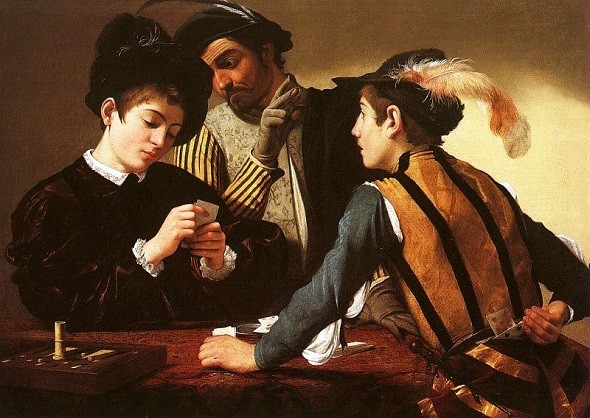
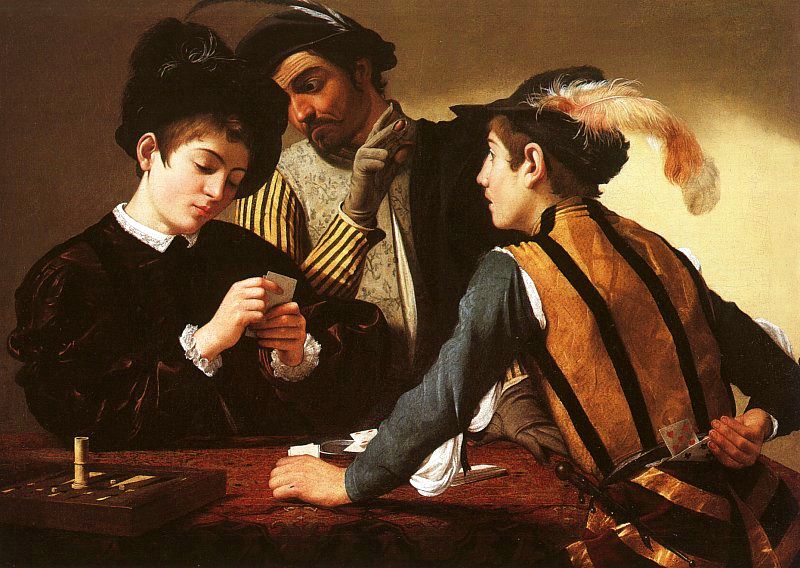
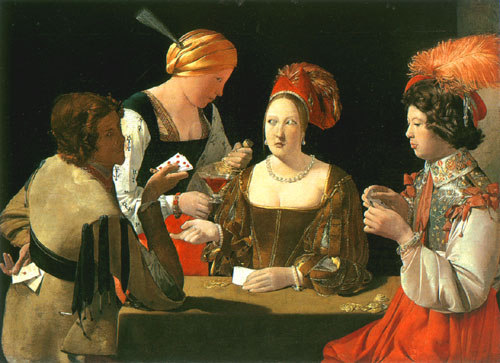
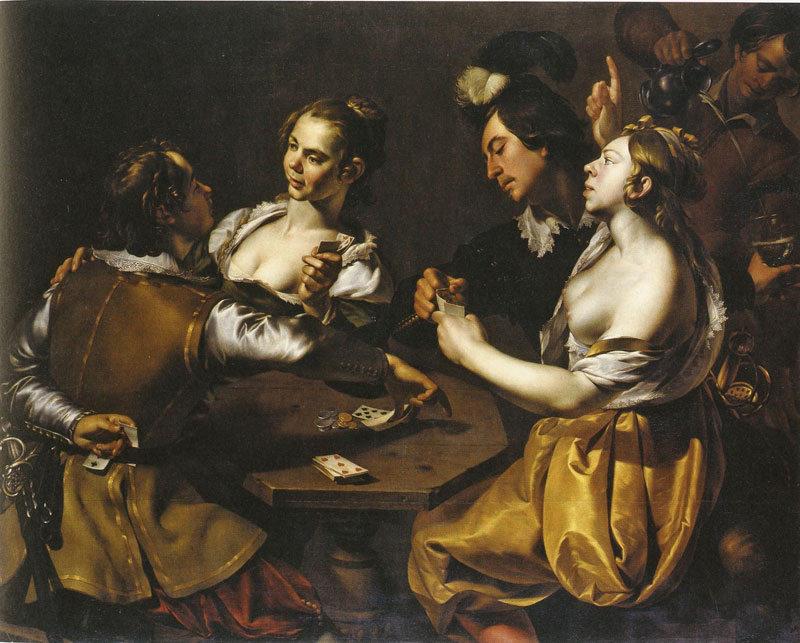
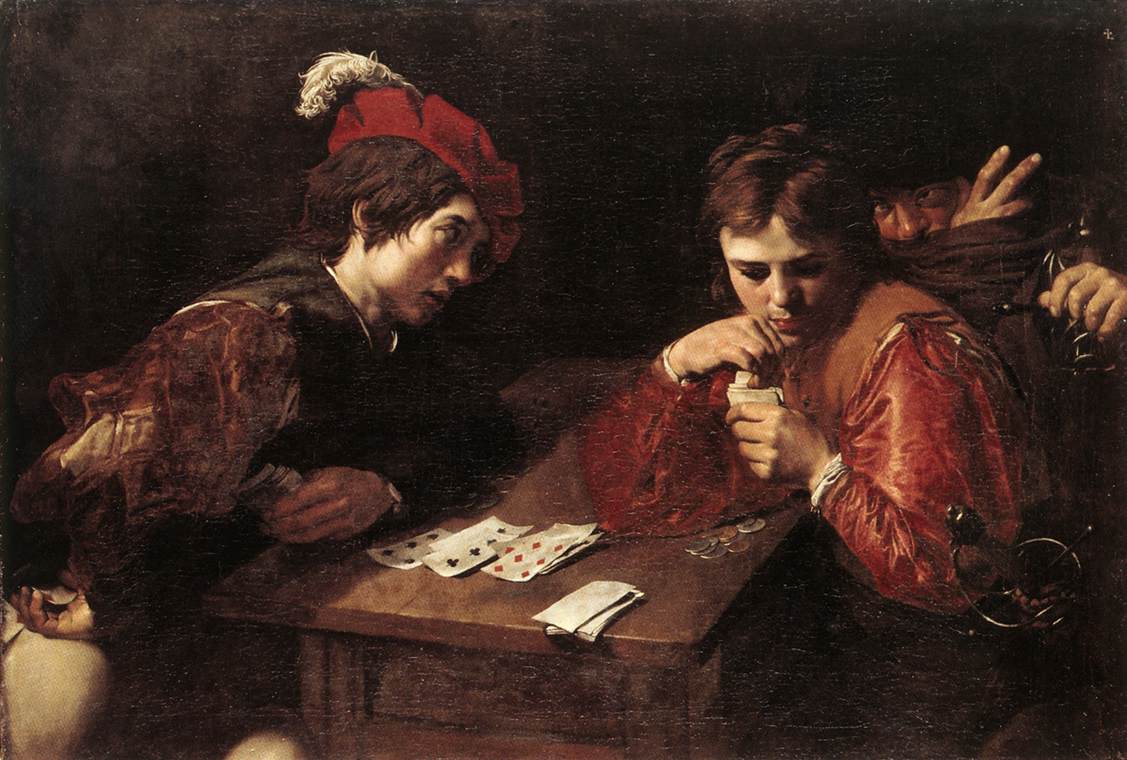
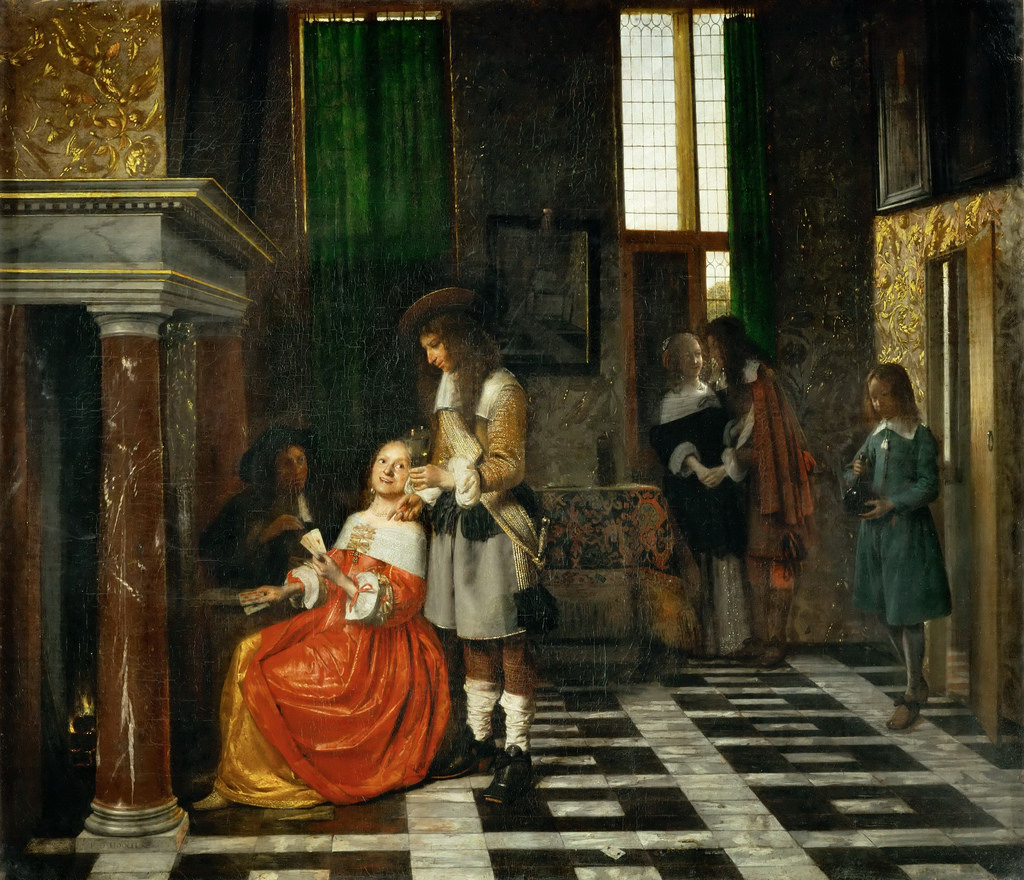

Kommentare (4)